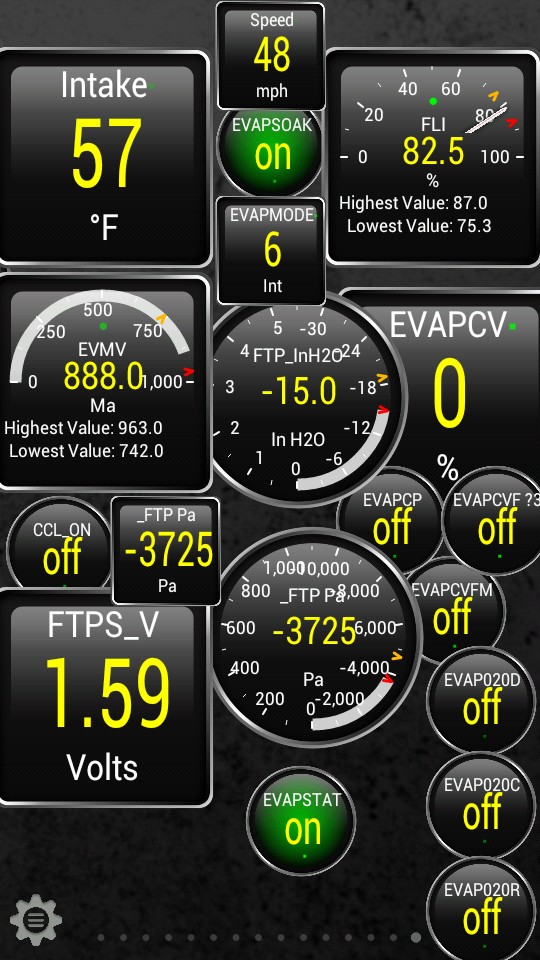Torque Pro is a powerful OBD2 diagnostic tool that allows you to monitor various vehicle systems, including the often-misunderstood Evaporative Emission Control (EVAP) system. This guide will show you how to use Torque Pro to understand your EVAP system’s performance and diagnose potential issues.
Understanding the EVAP System and its Importance
The EVAP system prevents fuel vapors from escaping into the atmosphere. It works by capturing these vapors in a charcoal canister and then purging them into the engine for combustion. A malfunctioning EVAP system can lead to failed emissions tests, poor fuel economy, and even drivability problems. Monitoring it with Torque Pro can help you catch problems early.
Setting Up Torque Pro for EVAP Monitoring
Torque Pro doesn’t come pre-configured with all the necessary parameters for in-depth EVAP monitoring. You’ll need to add custom PIDs (Parameter IDs) to unlock its full potential. Here’s how:
1. Downloading Custom PIDs
You’ll need a CSV file containing the custom PIDs for your specific vehicle make and model. Online forums dedicated to your vehicle are often a good place to find these files. Search for “Torque Pro EVAP PIDs [Your Vehicle Year Make Model]”.
2. Importing the CSV File
- Download the CSV file to your Android device.
- Copy the file to the
.Torque/ExtendedPIDsfolder on your device’s internal storage. - In Torque Pro, go to
Settings > Manage extra PIDs/Sensors > Menu > Add Predefined Set. - Select the CSV file you downloaded. Torque Pro will import the custom PIDs.

Key EVAP Parameters to Monitor in Torque Pro
After importing the custom PIDs, you can add gauges to your Torque Pro dashboard to monitor these crucial EVAP parameters:
- EVAPMODE: Indicates the current phase of the EVAP monitor test (-1: Not Running, 0: Entry conditions not met, 1-6: Various test phases).
- FTP_InH2O: Fuel Tank Pressure displayed in Inches of Water. Changes in pressure can indicate leaks or blockages.
- EVMV: Status of the Evaporative Vapor Management Valve (Purge Valve). Monitors whether the valve is opening and closing correctly.
- EVAPCV: Status of the Evaporative Canister Vent Valve. Helps determine if the vent valve is functioning properly.
- FTP_Pa: Fuel Tank Pressure in Pascals (the standard OBDII unit).
- EVAPCP: Evap canister Purge commanded. Shows if the PCM is commanding a purge.
Using Torque Pro to Diagnose EVAP Problems
By observing these parameters in real-time, you can pinpoint potential issues:
- Slow or No Pressure Changes: Could indicate a clogged EVAP vent valve or canister.
- Rapid Pressure Drops: Might signify a large leak in the system.
- Erratic EVMV Behavior: Suggests a faulty purge valve.
- Failure to Complete EVAP Test (EVAPMODE remains at a low number or -1): Indicates a problem preventing the system from completing its self-test. This could be due to various issues, including leaks, faulty valves, or incorrect operating conditions.
Important Considerations for EVAP Monitoring
The EVAP monitor runs under specific conditions:
- Engine Temperature: Typically between 40°F and 90°F.
- Vehicle Speed: Often above 40 mph.
- Fuel Level: Usually between 15% and 85%.
- Engine Off Soak Time: A minimum of 8 hours may be required.
Conclusion
Understanding How To Use Torque Pro Obd2 to monitor your EVAP system is a valuable skill for any car owner. By leveraging its capabilities and custom PIDs, you can gain valuable insights into your vehicle’s emissions system, diagnose problems early, and potentially save yourself from costly repairs. Remember to always consult your vehicle’s repair manual for specific diagnostic procedures.
